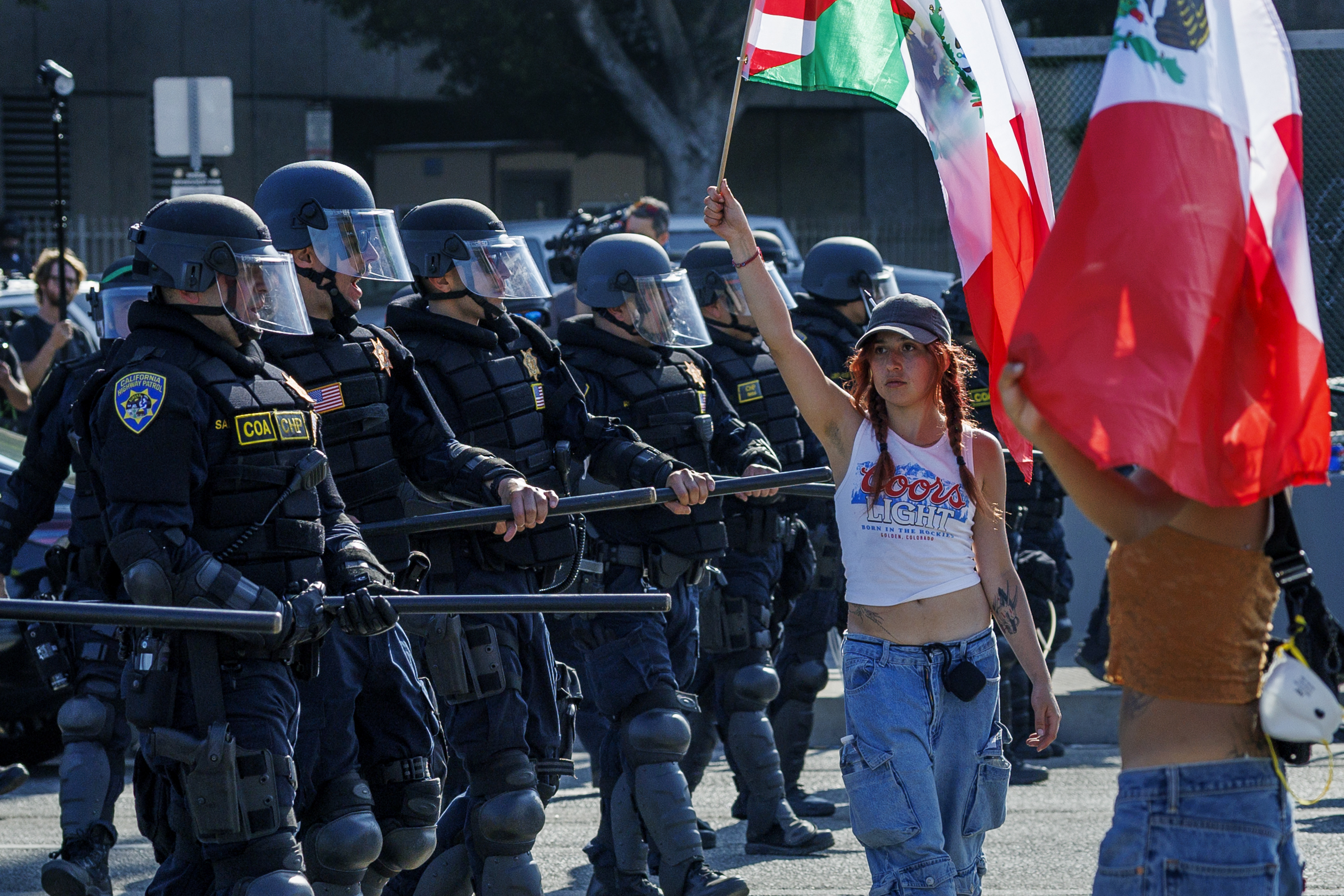Los Angeles Times wins July Sidney for impactful coverage of ICE raids
The staff of the Los Angeles Times win the July Sidney Award for the paper’s coverage of federal immigration raids.
Los Angeles is the current epicenter of the Trump administration’s sweeping immigration arrests. Homeland Security Secretary Kristi Noem claimed that the raids were targeting criminals but the L.A. Times found that 69% of those apprehended had no criminal record.
The L.A. Times tells the stories of ordinary Angelinos whose lives have been thrown into turmoil. Graduate student Job Garcia, an American citizen, was brutally restrained and detained by ICE agents for filming a raid at Home Depot.
Daycare operator Adriana Lorenzo is making backup plans so that someone can still pick up children whose parents get seized by ICE.
Army vet and green card-holder Sae Joon Park returned to South Korea rather than be deported over two twenty-year-old drug convictions he says he got while he was suffering from service-connected PTSD.
“The L.A. Times coverage shows the power a local newsroom can have on a national story,” said Sidney judge Lindsay Beyerstein. “The L.A. Times is on the street documenting the terror of the raids and the far-ranging fallout of Trump’s policies and offering a chilling preview of what may lie ahead for other cities.”

Backstory
Q: Give us an overview of your approach to covering the ICE raids and protests?
Rachel Uranga is our lead immigration reporter in L.A., and she jumped into action as soon as the immigration raids began. We have other reporters in beats that were highly relevant to what was happening in L.A., including our federal courts reporter, Brittny Mejia, and our law enforcement reporters. Numerous other reporters, including from our breaking news desk, as well as photographers and video journalists, also made their way to neighborhoods where protests were becoming tense and, in some cases, violent. We had meetings, sometimes twice a day, encompassing almost the entire newsroom to discuss where our coverage needed to go and what stories, from accountability to other enterprise, we should focus on.
Q: How are the raids affecting daily life in Los Angeles?
The raids have unquestionably brought fear to large swaths of the L.A. area and have disrupted immigrant life. Swap meets and other locations of the city and county’s rich informal economy have largely been emptied in many cases. Among many immigrants, both legal and undocumented, there is a feeling that they could easily be detained or arrested.
Q: How are ICE personnel responding to the presence of reporters? Have LAT reporters faced violence or arrests from ICE or other law enforcement in the course of reporting this story?
There were a few instances early on, during the heights of the street protests, in which journalists were struck by “less-lethal” rounds from law enforcement or by tear gas. ICE and Border Patrol agents are wearing masks, so their operations and interactions with journalists wouldn’t be marked by transparency. But in many cases, the raids happened so fast that journalists often arrived in the wake of the arrests. The journalists at that point did what journalists should: They asked witnesses for video to review and asked as many questions as possible to faithfully recreate what happened. ICE has not been tremendously forthcoming.
Q: How are the federal troops affecting the situation?
The presence of troops has given the city a sort of siege vibe. LA seems highly militarized depending on the neighborhood. But for the most part they don’t seem to be involved in immigration enforcement or much of anything besides protecting federal buildings. That has further raised questions about their deployment in a major American city.
Q: Tell us about the Purple Heart recipient who “self-deported” rather than face deportation.
Veteran Sae Joon Park legally immigrated to the United States from South Korea when he was seven years old. After graduating from high school in Sherman Oaks, the green card holder joined the U.S. Army. He was awarded a Purple Heart after being shot twice in late 1989 while serving in Panama. But he also suffered from PTSD. He self-medicated with drugs, which led to his arrest. Then he jumped bail, an aggravated felony, when he couldn’t stay sober. He served two years in prison, but the aggravated felony made him eligible for deportation, which federal officials deferred more than a decade ago. He was required to prove employment and sobriety annually since then. Living in Hawaii, he raised two children and was taking care of his 85-year-old mother, who is in the early stages of dementia, when he went for his annual check-in with federal officials earlier this year. Immigration agents placed an ankle monitor on him and gave him three weeks to get his affairs in order and self-deport. Park, 55, is not allowed to return to the United States for 10 years. He fears he will miss his mother’s death and his daughter’s wedding.
Q: How is ICE determining which people to stop on the street? Are they looking for specific people who are known to be undocumented, or are they stopping people based on how they look or where they are?
As reporters Brittny Mejia and Rachel Uranga have chronicled, most of the raids were done by what the federal government has referred to as “roving patrols.” While immigration enforcement agents have been involved in raids federal officials described as targeted operations, much of their work appears to be the result of focusing on places where they believe there are many undocumented immigrants. This includes businesses and neighborhoods. Among the affected populations, there has been much concern that agents have been profiling Latinos they assume are in the country illegally.


